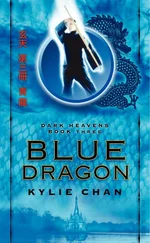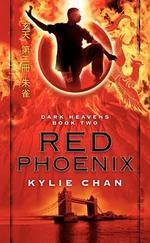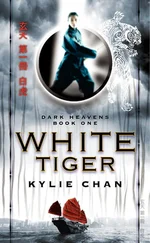Marcus had been driving us since Leo had gone, and he was familiar with the roads, particularly between Happy Valley and Wan Chai where he transported the students between the Academy and the Follies. He took us now up a narrow, steep ramp and onto Aberdeen Tunnel Road. The road was at second-storey height and we could clearly see into some of the older flats on either side; bare concrete walls, iron bunk beds, and dusty door and window frames.
Just before we entered the tunnel we passed behind the Happy Valley racecourse. The stands looked like massive five-storey buildings with a complicated series of stairs and escalators running through them. On the other side, the open stands had layer upon layer of seating and indoor restaurant viewing areas for the race day visitors. Hong Kong’s race season was limited to the cooler months, and races only took place on Wednesday evenings in Happy Valley and on Saturdays at Sha Tin. There were no other race meetings in the Territory at all. The Hong Kong Jockey Club provided accommodation and transport for all the horses in the Territory; and at each race meeting — the only legal gambling allowed in Hong Kong except for the Mark Six Lottery — the entire GDP of a small country would be wagered.
We whisked quickly through the Aberdeen Tunnel. On the other side, the view opened out; we were no longer in the dense urban high rises of Happy Valley. On the left were the prestigious large low-rise apartments of Shouson Hill, mostly occupied by expatriates who didn’t mind being a little further away from the action of the centre of the city. Directly in front of us, the hillside above Ocean Park was decorated with an enormous garden in the shape of a sea horse, the logo of the park.
We continued through Wong Chuk Hang industrial area. Factory buildings in Hong Kong usually towered up to fifteen or twenty storeys, with each floor occupied by a manufacturing enterprise. Elevators large enough to hold the trucks that were Hong Kong’s transport life blood serviced each floor.
Before we reached the ‘fishing village’ of Aberdeen, which was actually a tightly packed district of high-rise apartment buildings, we turned off and headed towards the Aberdeen Boat Club. Marcus wound through the back of the international schools and apartment buildings, eventually arriving at Shum Wan pier. A walkway with a traditional, upward-sweeping tiled roof meandered along the side of the long lay-by area, which was occupied by at least six large tourist buses. This was where the tourists were brought to have yum cha at the floating restaurants. They were ferried across from the two piers, one for each restaurant — the Jumbo and the Tai Pak. The Sea Palace restaurant, which had been moored next to the Jumbo on the other side, was long gone, towed away to become a tourist attraction in Manila.
‘Is the yum cha here still awful?’ Michael asked as we walked down to the old Sea Palace pier, now unused.
‘Couldn’t tell you. I stay well away from the tourist traps,’ Simone said.
‘The restaurants have been renovated recently, they’re much nicer inside now,’ I said.
‘You still pay tourist prices though,’ Simone said.
I shrugged. ‘You pay extra for the “experience”.’
Michael peered at the Jumbo restaurant across the water. ‘You’re kidding. A theme park on the sea?’
‘If you’re going to have tourists, you have to give them an “experience”,’ I said.
‘And something to buy,’ Simone said. ‘They put shops in there too!’
No one seemed to notice us as we stepped over the chain blocking off the third pier and walked down towards the water. A number of noisy mainland tourists were on the pier next to us, shouting with excitement as the boat approached them.
Michael chuckled. ‘Typical, going over to a huge restaurant for a banquet and they all have food in their hands.’
He was right. Most mainland tourists carried bags of food around with them, usually small snacks such as dried fish or nuts.
‘Oh, give it up, Michael, they’re enjoying themselves,’ Simone said. She gestured with her head. ‘That looks like our boat, it’s completely non-tourist.’
A five-metre motor launch was docked at the pier, its white sides gleaming. It had no registration or name. When the deckhand saw us approach, he pushed a gangway out to the edge of the pier for us.
We boarded, Simone leading and Michael guarding the rear. As the deckhand prepared to release the rope, a middle-rank demon appearing as a young Chinese man dressed in a smart black business suit came out from the main cabin. He quickly saluted all of us.
‘Passage is payment of a black jade coin,’ he said.
I handed him the scroll tied with vermillion ribbon that contained the Jade Emperor’s edict to let us into Hell. He perused it quickly; this part of the proceedings was just a formality. He returned it to me and nodded. ‘Your passage has been confirmed. Please come with me. There is tea and soda inside if you wish.’
As he spoke, the boat and the sky both went black and the surge of waves beneath the boat ceased. The sound of the noisy tourists on the next pier was cut off, as was the noise from the myriad boats moored in the typhoon shelter. The air echoed with the eerie sound of the inside of a huge cavern and darkness surrounded us. The water was completely still and black as ice, and the temperature dropped.
‘Come inside,’ the demon said. ‘It’s about an hour’s journey and it’s freezing out here. And I’m very honoured to make your acquaintance.’
‘Yes, I’m well aware of the similarities to the Western legend of the River Styx,’ the demon said as he poured the tea. ‘I’ve studied the mythology and I’m interested in the way that theirs — or yours — matches up with ours. I’d love to travel to the West and see for myself, but of course I’m much too small to travel that far from my Centre.’
‘Has the King ever said anything about it?’ I said.
The demon made a soft sound of amusement. ‘I have been lucky enough in my long life to avoid attracting the attention of the King. It is not something I would do by choice.’
He nodded to Simone. ‘I remember when you came through as a child, Princess. You scared me to death with the amount of shen energy you were radiating. You threatened to destroy me if I didn’t take you across. Of course, I couldn’t take you without the payment of a coin and I readied myself to die.’
‘I remember now, it’s all coming back to me,’ Simone said. ‘At the time I was so upset it was just a blur. I was going to destroy you but then I decided not to waste the time.’
‘You rose on your shen energy and floated across the water. You were a thing of terrifying beauty, making the water beneath you ripple as you drifted above it.’ He smiled slightly and shook his head. ‘You should have been destroyed — the water is full of the power of yin itself; one touch is destruction. Being in the centre of the river is like being in a vortex of yin and therefore should annihilate anything except this specially constructed boat. Yet you were completely unharmed. Later I learnt that you had summoned yin, and I understood. You could probably manipulate this water if you wished to control it.’
Simone smiled back tightly. ‘I don’t think I’ll bother. I’m just here to find my Retainer.’
‘As you wish, ma’am,’ he said, and we continued in silence.
The landing on the other side was a rough-hewn alcove cut out of the dark grey rock with a smooth stone floor. The only break in the wall of rock was a modern black-doored elevator with a single black smoked-glass button next to it. The demon pressed the button and the light went on.
‘This is where I leave you. There is only one destination for this lift,’ the demon said. He saluted us. ‘Ladies. Sir. Good luck on your sortie and I hope that I will be able to ferry you on your return.’
Читать дальше












